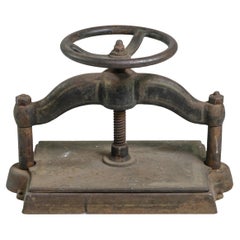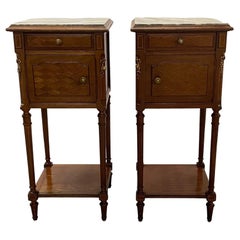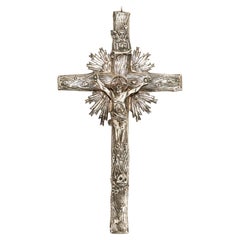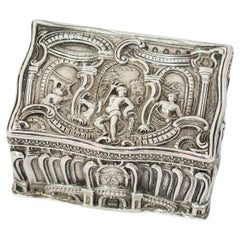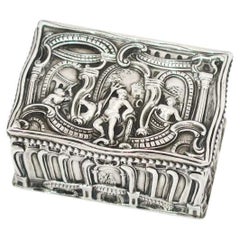Late 19th Century More Furniture and Collectibles
American Victorian Antique Late 19th Century More Furniture and Collectibles
Iron
English Antique Late 19th Century More Furniture and Collectibles
Leather
French Louis XVI Antique Late 19th Century More Furniture and Collectibles
Marble
Polish Antique Late 19th Century More Furniture and Collectibles
Silver
German Antique Late 19th Century More Furniture and Collectibles
Silver
German Antique Late 19th Century More Furniture and Collectibles
Silver
Antique Late 19th Century More Furniture and Collectibles
Bronze
American Antique Late 19th Century More Furniture and Collectibles
Wool
French Antique Late 19th Century More Furniture and Collectibles
Upholstery, Cane, Walnut
American Antique Late 19th Century More Furniture and Collectibles
Cotton
English Antique Late 19th Century More Furniture and Collectibles
Mahogany
Antique Late 19th Century More Furniture and Collectibles
Paper
American Arts and Crafts Antique Late 19th Century More Furniture and Collectibles
Metal
Swedish Antique Late 19th Century More Furniture and Collectibles
Wood, Paint
American Antique Late 19th Century More Furniture and Collectibles
Cotton
American Antique Late 19th Century More Furniture and Collectibles
Wool
American Antique Late 19th Century More Furniture and Collectibles
Cotton
American Antique Late 19th Century More Furniture and Collectibles
Silk
Asian Antique Late 19th Century More Furniture and Collectibles
Silk
American Neoclassical Antique Late 19th Century More Furniture and Collectibles
Bronze
American Antique Late 19th Century More Furniture and Collectibles
Linen
French Louis XV Antique Late 19th Century More Furniture and Collectibles
Walnut
American Antique Late 19th Century More Furniture and Collectibles
Wool
American Victorian Antique Late 19th Century More Furniture and Collectibles
Leather
Russian Antique Late 19th Century More Furniture and Collectibles
Silver
German Antique Late 19th Century More Furniture and Collectibles
Silver
American Antique Late 19th Century More Furniture and Collectibles
Wool
American Antique Late 19th Century More Furniture and Collectibles
Cotton
French Grand Tour Antique Late 19th Century More Furniture and Collectibles
Slate
French French Provincial Antique Late 19th Century More Furniture and Collectibles
Upholstery, Oak
American Antique Late 19th Century More Furniture and Collectibles
Cotton
French Late Victorian Antique Late 19th Century More Furniture and Collectibles
Metal, Zinc
American Antique Late 19th Century More Furniture and Collectibles
Cotton
German Renaissance Antique Late 19th Century More Furniture and Collectibles
Rock Crystal, Gold, Enamel
American Antique Late 19th Century More Furniture and Collectibles
Leather, Paper
American Antique Late 19th Century More Furniture and Collectibles
Canvas
Indian Antique Late 19th Century More Furniture and Collectibles
Wood
American Adirondack Antique Late 19th Century More Furniture and Collectibles
Wool
American Adirondack Antique Late 19th Century More Furniture and Collectibles
Wool
Read More
Pamela Shamshiri Shares the Secrets behind Her First-Ever Book and Its Effortlessly Cool Interiors
The sought-after designer worked with the team at Hoffman Creative to produce a monograph that beautifully showcases some of Studio Shamshiri's most inspiring projects.
Moroccan Artworks and Objects Take Center Stage in an Extraordinary Villa in Tangier
Italian writer and collector Umberto Pasti opens the doors to his remarkable cave of wonders in North Africa.
Montecito Has Drawn Royalty and Celebrities, and These Homes Are Proof of Its Allure
Hollywood A-listers, ex-pat aristocrats and art collectors and style setters of all stripes appreciate the allure of the coastal California hamlet — much on our minds after recent winter floods.
Whaam! Blam! Pow! — a New Book on Pop Art Packs a Punch
Publishing house Assouline and writer Julie Belcove have teamed up to trace the history of the genre, from Roy Lichtenstein, Andy Warhol and Yayoi Kusama to Mickalene Thomas and Jeff Koons.
The Sparkling Legacy of Tiffany & Co. Explained, One Jewel at a Time
A gorgeous new book celebrates — and memorializes — the iconic jeweler’s rich heritage.
What Makes a Gem-Encrusted Chess Set Worth $4 Million?
The world’s most opulent chess set, weighing in at 513 carats, is literally fit for a king and queen.
Tauba Auerbach’s Geometric Pop-Up Book Is Mighty Rare, Thanks to a Hurricane
This sculptural art book has an epic backstory of its own.
Step inside the Storied Mansions of Palm Beach’s Most Effervescent Architect
From Spanish-style courtyards to fanciful fountains, these acclaimed structures abound in surprising and elegant details.
